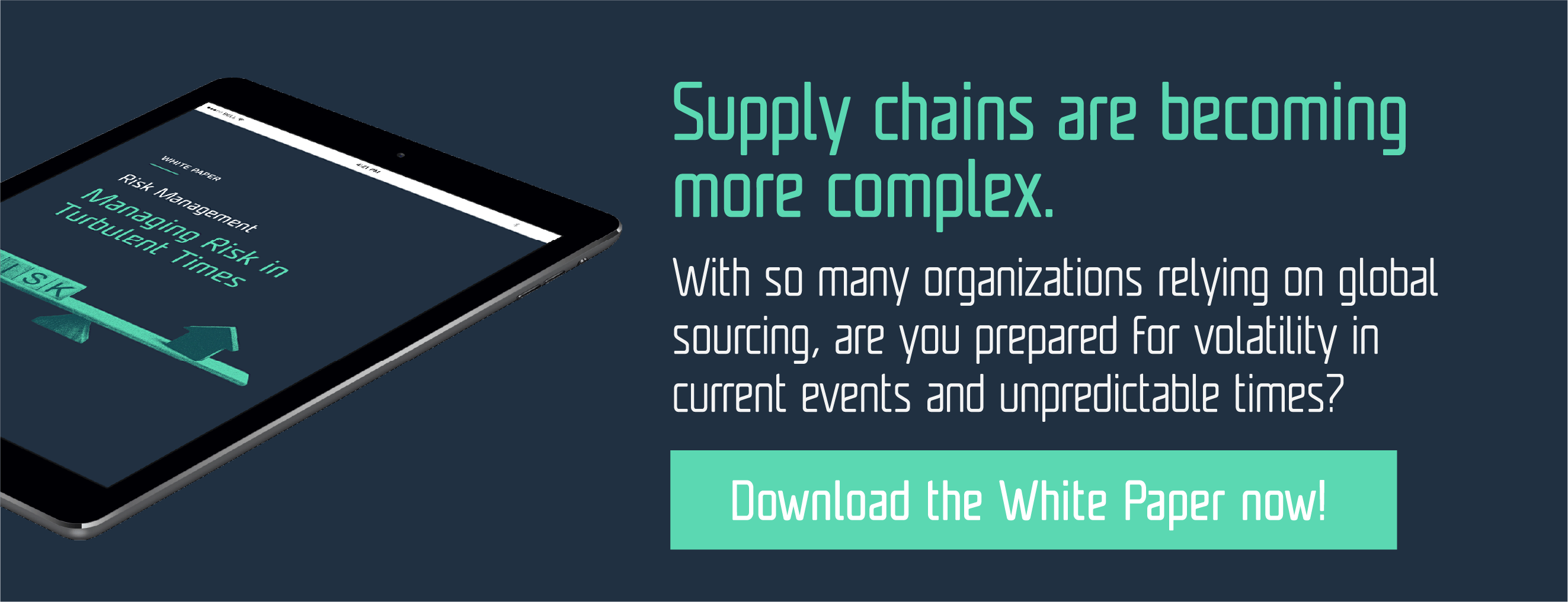Managing Risk Through Better Communication

Do you know the risks your supply chain operation is facing?
In today's volatile environment, those risks are greater than ever. The effects of the global Covid-19 pandemic, war, environmental disasters and new security threats combine to create an incredibly unpredictable global trading ecosystem.
As a logistics manager, it falls on your shoulders to ensure that products – whether raw materials or finished goods – get to their intended destination on time. And these days, managing risks all along the supply chain can be a big part of that job.
Do Your Research
First, you need to know the hazards to suppliers, transportation, information technology, and infrastructure to be prepared if something goes wrong. You need a risk assessment.
How do you do that? We're not going to candy-coat it – it can be a big job. Depending on the complexity of your supply lines, you may need to delve into the complexities of foreign regulations, follow geopolitical maneuvering, research the origins of your material inputs, learn transport options and assess cybersecurity.
Fortunately, most supply chains rely on numerous partners, from suppliers to carriers and forwarders, third-party logistics providers and more. They can give you all kinds of information to make the process easier. You can also engage specialist organizations that will assess and track risks for you if necessary.
Once you know the risks, you need to have a plan ready with alternative routes, suppliers and backups when disruptions occur. The plan should focus on the areas where the risk is greatest, so you should spend the most time planning for alternatives where you are most exposed. For example, if that's transport cost, build a backup scenario using another mode. If supplier disruption is the biggest hazard, cultivate relationships with new companies that can supply the same product.
Digitization
A very effective strategy for managing risk is ensuring you have the most up-to-date communications tools. Digitization is a trend we hear about in the supply chain world, and it's popular for a reason. Digital tools deliver visibility, reliability and instant information.
Companies can collect data from a multitude of sources – suppliers, customers, transportation partners, warehouse management systems, GPS tracking systems, and global news reports – and deploy new technologies like artificial intelligence (AI) to catch early warning signs, develop tactical plans, or test out alternatives in the face of potential disruptions.
Using the right technology can help provide the transparency needed to better assess risk and contingency options and improve the effectiveness and efficiency of collaboration with suppliers. It can help your entire supply chain operation run efficiently, thus reducing the risk of slowdowns and disruptions on the other side of the world or as close to home as your local warehouse.
Think about a busy distribution centre. Potentially hundreds of loads come and go every day. Each truck has to be scheduled with a time at the dock for loading or unloading, and people have to be on hand to do the work.
Improving communications by employing software like dock scheduling and automating tasks such as gate processes can offer greater flexibility in adjusting to last-minute unforeseen situations, and reduce the risks of delays, missed appointments, and worker shortages affecting your loading and unloading processes.
At C3 Solutions, we specialize in making these processes work for our partners. By employing our C3 Reservations dock scheduling and C3 Hive driver communications tools, you can remove the danger that poor communication will interrupt operations.
For more information, schedule a demo with one of our product and industry specialists today!

